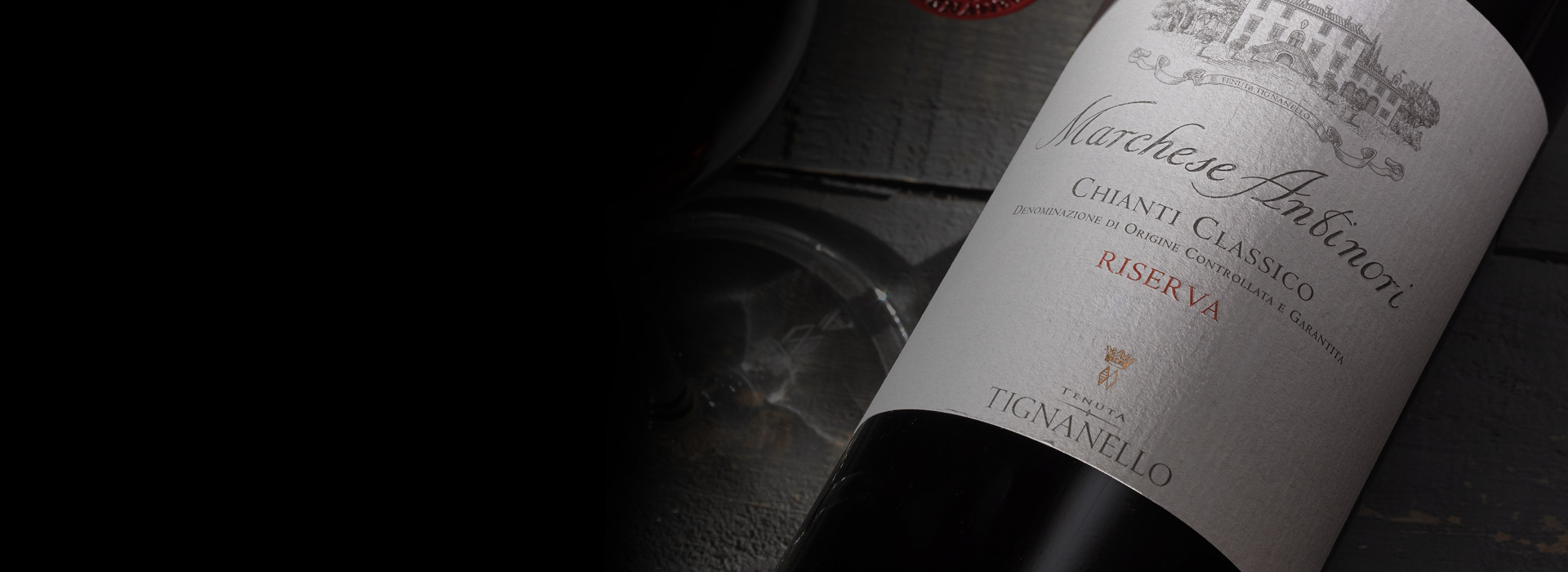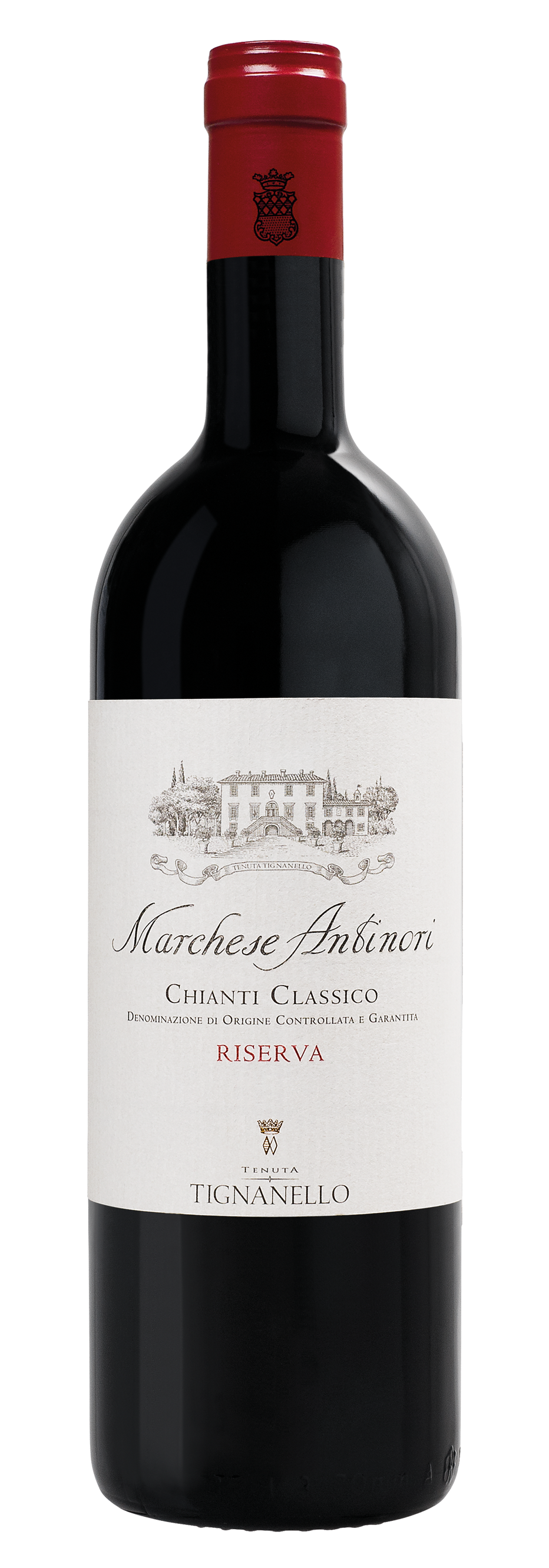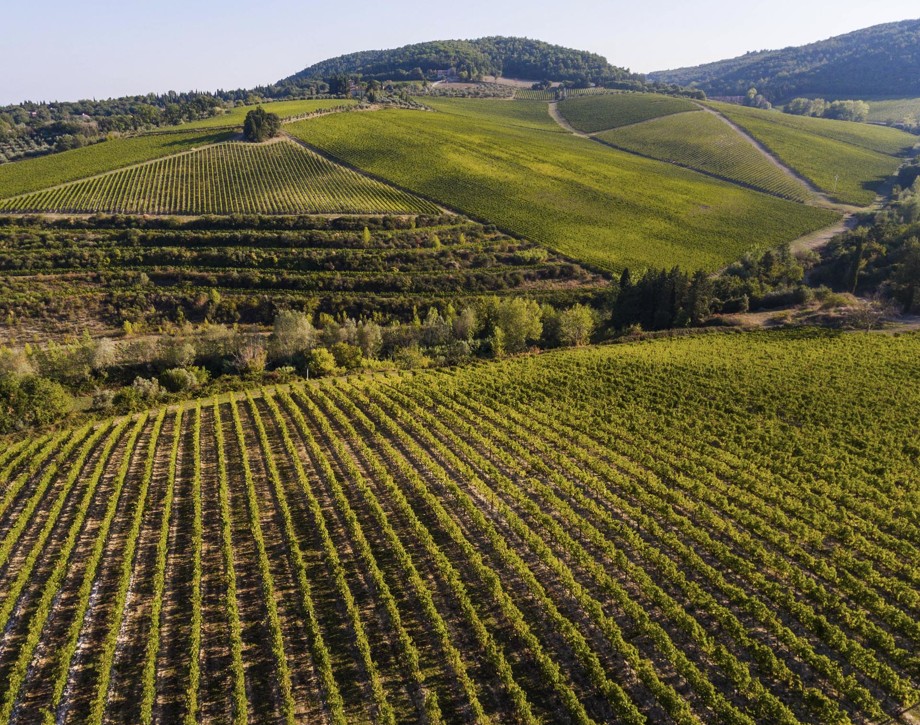Marchese Antinori

Climate
After a mild and dry autumn, the winter of 2012 in Chianti Classico was characterized by cold temperatures and normal rainfall, above all in the months of January and February. During the first half of February, in particular, temperatures dropped and snow fell without, however, damaging the vines. Spring began with rather cool and dry weather, causing a slight delay in bud burst and flowering compared to previous years. The months of April and May were marked by ample precipitation, a fundamental factor in enabling the vines to confront the lengthy rainless period which began in June and lasted all the way to the end of August, conditioning the development of vines both in terms of the growth of the canopy and the size and weight of the berries. The rain which fell during the very last days of August brought the vineyard back into balance, assisting the different grape varieties to proceed with regularity towards fully ripening, while the months of September and October, both mild in their temperatures and with normal rainfall, enabled the grapes to ripen properly both in terms of the accumulation of sugars and the physiological maturity of the skins. The harvesting of the grapes was concentrated in the period between September 20th and early October.
Vinification
The climatic conditions of the growing season forced, as soon as the harvest began, a careful selection of the grapes both in the vineyard and in the cellars; the grape bunches were delicately destemmed and the individual berries rigorously selected on the sorting table in order to assure the maximum typicality of their components and aromas, essential in the case of Sangiovese and of Cabernet Sauvignon as well. Once in the fermenting tanks, the musts were macerated with the softest possible techniques in to assure both an intense extraction and elegant and supple tannins. The musts, from the very beginning of their fermentation, showed fine color and an important structure. The fermentation of the sugars into alcohol lasted approximately a week and the wine remained on its skins for an additional nine to ten day period as well. After being run off its skins, the wine went immediately into small oak barrels, coopered principally from French oak, where it went through a complete malolactic fermentation by the end of the year. Once racked, the wines, still separated on the basis of their vineyard of origin, were aged in French and Hungarian oak barrels for approximately a year. During this lengthy phase of development, they were regularly tasted and controlled to insure an evolution in wood of a maximum quality level; the wines were then blended at the end of the aging period. The final blend was then bottled and given an additional year of bottle aging before commercial release.
Historical Data
The Tignanello estate is located in the heart of the Chianti Classico production zone, nestled between the valleys of the Greve and Pesa rivers, and extends over close to 800 total acres (319 hectares), some 130 of which (415 hectares) are planted to vines. The vineyards consist principally of the native Sangiovese grape along with such non-traditional varieties as Cabernet Sauvignon and Cabernet Franc. The Marchese Antinori is an historic wine of the Antinori cellars which, since 2011, is produced from the grapes of the Tignanello estate. It is a wine which presents itself as the full expression of the quality and elegance of the Sangiovese of this part of Tuscany.
Tasting Notes
An intense ruby red in color, the 2012 Marchese Antinori shows a nose of elegance and finesse marked by aromas of red fruit and liquorice. The palate is soft and supple with solid and perceptible tannins, while the acidity gives the wine a tonic vibrancy and savor, a finish and aftertaste which are both long and focused.
Awards
James Suckling 92/100 USA Wine Enthusiast 92/100 USA Antonio Galloni 91+/100 USA Wine Spectator 88/100 Italia I Vini Di Veronelli Super Tre stelle Italia Wine Advocate 91/100 USA

The Wine
This Antinori family’s historic label, since the 2011 vintage Marchese Antinori has been produced with grapes exclusively from the Tignanello vineyard. It’s made almost entirely with Sangiovese with a small percentage of other complementary varieties. A wine that fully expresses the quality and elegance of Sangiovese grapes grown in this area.

Climate
After a mild and dry autumn, the winter of 2012 in Chianti Classico was characterized by cold temperatures and normal rainfall, above all in the months of January and February. During the first half of February, in particular, temperatures dropped and snow fell without, however, damaging the vines. Spring began with rather cool and dry weather, causing a slight delay in bud burst and flowering compared to previous years. The months of April and May were marked by ample precipitation, a fundamental factor in enabling the vines to confront the lengthy rainless period which began in June and lasted all the way to the end of August, conditioning the development of vines both in terms of the growth of the canopy and the size and weight of the berries. The rain which fell during the very last days of August brought the vineyard back into balance, assisting the different grape varieties to proceed with regularity towards fully ripening, while the months of September and October, both mild in their temperatures and with normal rainfall, enabled the grapes to ripen properly both in terms of the accumulation of sugars and the physiological maturity of the skins. The harvesting of the grapes was concentrated in the period between September 20th and early October.
Vinification
The climatic conditions of the growing season forced, as soon as the harvest began, a careful selection of the grapes both in the vineyard and in the cellars; the grape bunches were delicately destemmed and the individual berries rigorously selected on the sorting table in order to assure the maximum typicality of their components and aromas, essential in the case of Sangiovese and of Cabernet Sauvignon as well. Once in the fermenting tanks, the musts were macerated with the softest possible techniques in to assure both an intense extraction and elegant and supple tannins. The musts, from the very beginning of their fermentation, showed fine color and an important structure. The fermentation of the sugars into alcohol lasted approximately a week and the wine remained on its skins for an additional nine to ten day period as well. After being run off its skins, the wine went immediately into small oak barrels, coopered principally from French oak, where it went through a complete malolactic fermentation by the end of the year. Once racked, the wines, still separated on the basis of their vineyard of origin, were aged in French and Hungarian oak barrels for approximately a year. During this lengthy phase of development, they were regularly tasted and controlled to insure an evolution in wood of a maximum quality level; the wines were then blended at the end of the aging period. The final blend was then bottled and given an additional year of bottle aging before commercial release.
Historical Data
The Tignanello estate is located in the heart of the Chianti Classico production zone, nestled between the valleys of the Greve and Pesa rivers, and extends over close to 800 total acres (319 hectares), some 130 of which (415 hectares) are planted to vines. The vineyards consist principally of the native Sangiovese grape along with such non-traditional varieties as Cabernet Sauvignon and Cabernet Franc. The Marchese Antinori is an historic wine of the Antinori cellars which, since 2011, is produced from the grapes of the Tignanello estate. It is a wine which presents itself as the full expression of the quality and elegance of the Sangiovese of this part of Tuscany.
Tasting Notes
An intense ruby red in color, the 2012 Marchese Antinori shows a nose of elegance and finesse marked by aromas of red fruit and liquorice. The palate is soft and supple with solid and perceptible tannins, while the acidity gives the wine a tonic vibrancy and savor, a finish and aftertaste which are both long and focused.
Awards
James Suckling 92/100 USA Wine Enthusiast 92/100 USA Antonio Galloni 91+/100 USA Wine Spectator 88/100 Italia I Vini Di Veronelli Super Tre stelle Italia Wine Advocate 91/100 USA

Tenuta Tignanello
The Tenuta Tignanello estate is in the heart of Chianti Classico, in the gently rolling hillsides between the Greve and Pesa river valleys. It extends over an area of 319 hectares (788 acres), of which about 165 (407 acres) are dedicated to vines. Two of the estate’s prized vineyards are on the same hillside, Tignanello and Solaia, on soils that originated from marine marlstone from the Pliocene period rich in limestone and schist.
Soil
Calcareous rocky soils with alberese (marl limestone) and marl.


















